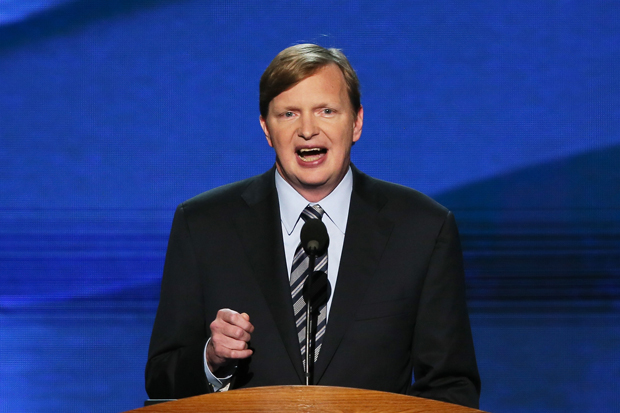Not all the pollsters got it wrong. On the morning of the election, a set of strikingly accurate predictions was slapped on David Cameron’s desk. They had been compiled by Jim Messina and Lynton Crosby, the strategists who had been running a campaign derided as dull and repetitive. But, as their research showed, it was also effective. Messina is now back in his office in Washington DC.
‘We predicted 312 seats that morning to Lynton,’ he says. This was in line with the exit poll (316 Tory seats) that shocked Westminster. Yet, every day of the campaign, the polls had the Tories and Labour neck and neck. Did he ever doubt his methods? ‘No, not at all,’ he says. Crosby carried out daily tracker polls and Messina was conducting analytics. ‘Both of us had the same data, so we were very sure.’
Their working assumption was that all the polls used by the newspapers — YouGov, ComRes, Ipsos MORI — were talking rot. ‘Having been through the Obama campaign,’ says Messina, his assumption was that ‘public polling is wrong’. So what were the mistakes? ‘One, a lot of them were using a 2010 view of the electorate. Two, they weren’t naming the candidates in the seats. I assume that is a recipe to get it absolutely wrong — because some incumbents do really well.’
The British pollsters generally asked which party people supported; not about which individual they’d choose as an MP. Failure to make that distinction, Messina believed, led the pollsters up a blind alley.
Also, he and Crosby were running far larger samples, with a mixture of online and phone calls. The public pollsters used online or telephone research, but never both. As he put it, only the Tories had that ‘kind of mix — there certainly wasn’t anyone doing modelling of the electorate’.
And British pollsters need to work out why their figures were so wrong for so long: ‘It was so clear, especially for the entire last month, that they were wrong. But none of them wanted to hear about it.’
The Liberal Democrats won just eight seats, but even on election day YouGov predicted that they would win 23. ‘You really have to not be paying attention to get that,’ says Messina. Most Lib Dem losses fell to the Tories. Was that a product of his data, or Crosby’s strategy?
‘Lynton was definitely the inspiration behind that strategy and believed very, very deeply in it and really understood it,’ he replies. ‘At his request, we built a model of the seats of everyone we felt could switch between us and the Lib Dems. We had our field team contact those people directly and that clearly worked.’
Labour also hired its own ex-Obama campaign adviser, David Axelrod, who offered advice on messaging instead of polling and data.
Messina seems unimpressed. ‘To this day, I can’t tell you what Labour’s message was, other than, “We don’t like the Tories.” But until the famous Ed rock or Ed stone, you sort of had no idea what they were running on. When you are trying to do that five days before [an election], you’re in deep, deep trouble.’
Crosby’s research, he says, showed ‘that Cameron had taken tough steps, things were starting to get better — and Miliband wasn’t offering anything new. That combination made it very, very difficult for them to win.’
Got something to add? Join the discussion and comment below.
Get 10 issues for just $10
Subscribe to The Spectator Australia today for the next 10 magazine issues, plus full online access, for just $10.
You might disagree with half of it, but you’ll enjoy reading all of it. Try your first month for free, then just $2 a week for the remainder of your first year.















Comments
Don't miss out
Join the conversation with other Spectator Australia readers. Subscribe to leave a comment.
SUBSCRIBEAlready a subscriber? Log in